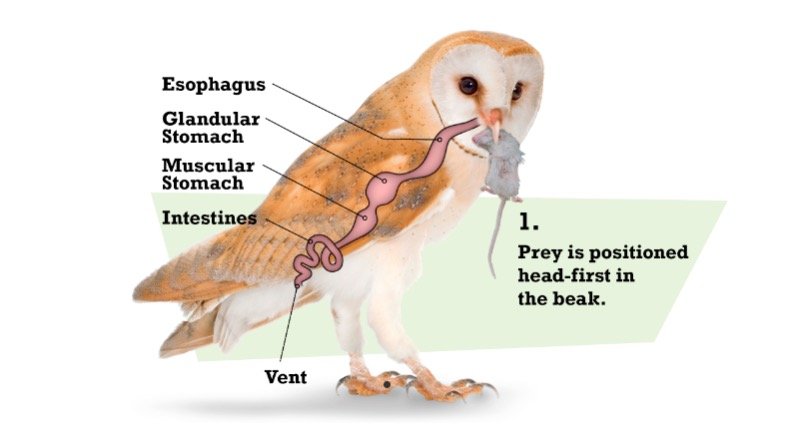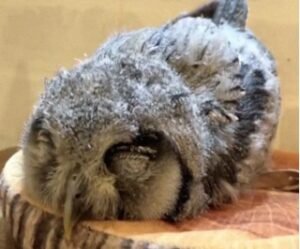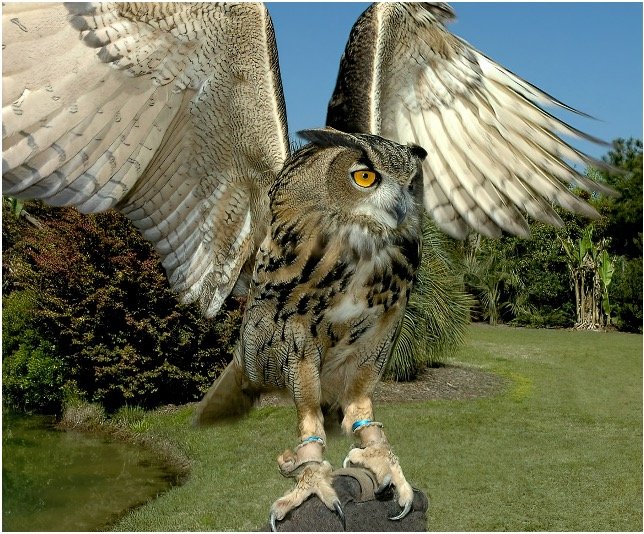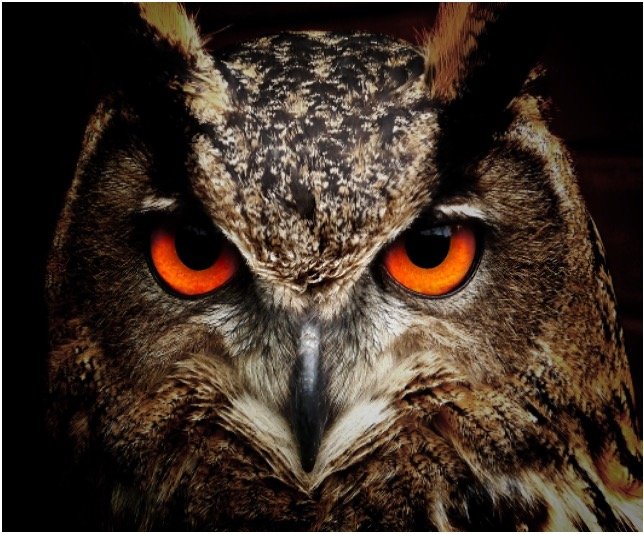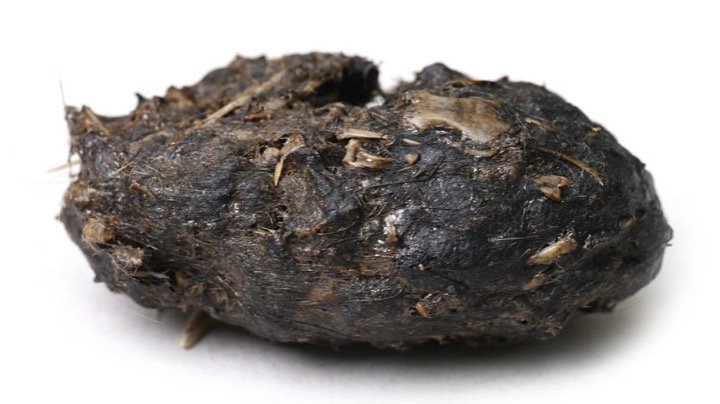
What is an Owl Pellet?
An owl pellet is a mass of undigested prey parts regurgitated by an owl after it has been partially digested in the bird’s stomach. Owls are carnivores that eat small mammals, birds, insects, and other insects.
When an owl swallows its prey, it stores it in its crop and mixes it with digestive juices. The food then moves to the stomach, where acids and enzymes further break it down.
Some prey parts, such as bones, fur, and feathers, cannot be digested by the owl’s stomach. These indigestible parts combine to form a compact mass known as an owl pellet, which the owl regurgitates.
Owl pellets are often used by scientists and researchers to study the feeding habits and ecology of owls, as they provide information on the types of prey consumed by these birds. Dissecting an owl pellet can also be a fun and educational activity for students who want to learn about animal anatomy and food webs.
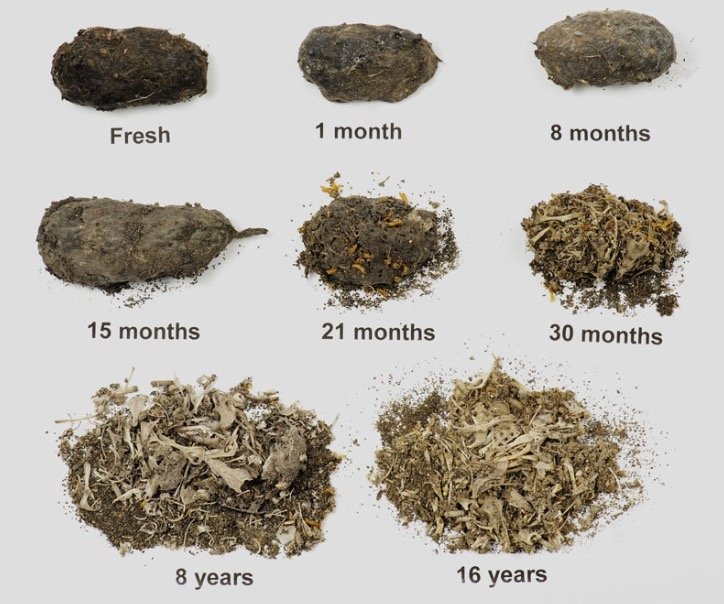
What Does an Owl Pellet Look Like?
An owl pellet is a small, compact mass that typically measures 1 to 3 inches (2.5 to 7.6 cm) in length. The size of the pellet is determined by the owl’s size and the size of the prey it has consumed.
Due to the presence of fur and feathers from the prey, owl pellets are typically gray or brown in color and have a slightly furry texture. They are also typically oval or cylindrical in shape, with a thin layer of mucus or digestive juices covering them.
How Big are Owl Pellets?
The size of owl pellets varies depending on the owl species and the size of the prey consumed. Owl pellets typically measure 1 to 4 centimeters (0.4 to 1.6 inches) in length and 0.5 to 1.5 centimeters (0.2 to 0.6 inches) in diameter.
The size of owl pellets is also determined by the owl’s age and gender, as well as its nutritional status and feeding habits.
Younger owls and those still growing, for example, may produce smaller pellets than mature adults, whereas owls that consume larger prey may produce larger pellets.

What is Biggest Owl Pellets?
The world’s largest owl pellets have been produced by the Blakiston’s fish owl (Bubo blakistoni), the world’s largest species of owl.
The pellets produced by Blakiston’s fish owls can be quite large, measuring up to 7 centimeters (2.8 inches) in length and 4 centimeters (1.6 inches) in diameter.
What Color are Owl Pellets?
The color of owl pellets can vary depending on a number of factors, including owl species and prey type. Owl pellets are typically gray or brown in color, but they can be lighter or darker depending on the contents of the pellet.
One factor that can influence the color of owl pellets is the degree of digestion that has occurred. Pellets that have been recently regurgitated may still contain partially digested material that can give them a different color than those that have been sitting in the environment for a longer period of time.
What Does An Owl Sound Like?
It is also important to note that the color of owl pellets can change over time due to exposure to sunlight and other environmental factors. Some pellets may become bleached or faded over time, while others may darken or become more discolored as a result of exposure to moisture or other substances.

Do All Owls Produce Owl Pellets?
Yes, owl pellets are produced by all owls. Owl pellets are a natural byproduct of the digestive process in owls, and they form when the owl regurgitates undigested parts of the prey it has consumed in a compact, pellet-shaped mass.
Facts About Owl Pellets
- Owl pellets vary in size depending on the owl’s size and the prey consumed. They can be as small as a grape or as large as a tennis ball in size.
- Owl pellets are regurgitated masses of undigested food, not poop.
- Depending on their size and diet, owls typically produce one to three pellets per day.
- Owl pellets can be found in a wide range of environments, including forests, grasslands, and deserts.
- Owl pellets can reveal important details about owl diet and feeding habits, as well as the ecology of the ecosystems in which they live.
- For many years, owl pellets have been used in schools to teach students about ecology, food webs, and predator-prey relationships.
- Researchers can identify the types of prey that the owl eats, how frequently it eats, and where it hunts by dissecting owl pellets.
- Owls have been observed reusing pellets as nesting material.
- Pelletology is the study of owl pellets.
- Owl pellets can reveal information about the health of an ecosystem.
- Changes in the composition of owl pellets over time can indicate changes in the abundance and diversity of prey species, as well as provide insights into the ecosystem’s overall health.
How Does Owl Pellet Form?
Owl pellets form as a result of the owl’s unique digestive system. When an owl consumes its prey, it first stores it in its crop, which is an expanded section of the esophagus that serves as a temporary storage chamber.
The food moves from the crop to the proventriculus, the first part of the stomach where digestive enzymes and acid are secreted. The digestive process is then carried on in the gizzard, a muscular chamber that grinds up the food into smaller pieces using small stones or grit that the owl has ingested.
The nutrient-rich components of the food are absorbed into the bloodstream after it has been broken down in the gizzard, and the indigestible parts, such as bones, fur, feathers, and insect exoskeletons, are formed into a compact mass called an owl pellet.
The owl then regurgitates the pellet several hours after the meal has been consumed. Owl pellets are usually expelled from the owl’s mouth as a single, solid mass. The size and shape of the pellet are determined by the owl’s prey size and type.
The formation of an owl pellet allows the owl to extract nutrients from its prey while eliminating indigestible parts in a compact and easy-to-eliminate form.
Digestive System of Owl
An owl’s digestive system is designed for the consumption of prey, which is typically swallowed whole and regurgitated as an owl pellet. Here is a general overview of an owl’s digestive system:
1. Mouth and Beak: The hooked and sharp beak of the owl allows it to tear apart its prey. The mouth is lined with small, sharp teeth known as tomial teeth, which aid in gripping and tearing the prey.
2. Esophagus: The esophagus is a muscular tube that connects the mouth and stomach. It can accommodate large prey items by expanding.
3. Proventriculus: The proventriculus is the first section of the stomach. It secretes digestive enzymes, which start breaking down the prey.

4. Gizzard: The gizzard is a muscular organ that is located between the proventriculus and the small intestine. The owl grinds the prey into smaller pieces by swallowing small stones or grit.
5. Small Intestine: The small intestine is where the majority of digestion and nutrient absorption takes place.
6. Large Intestine and Cloaca: The remaining indigestible parts of the prey pass through the large intestine and exit through the cloaca, which serves as the common opening for the digestive, reproductive, and urinary tracts.
6. Pellet Formation and Regurgitation: In the owl’s stomach, indigestible parts of the prey, such as bones, fur, and feathers, form a compact pellet. The owl regurgitates the pellet from its mouth when it is ready to be expelled.
Do Owls Poop?
Yes! Owls do, in fact, poop. Owls, like all other animals, produce waste as a result of their digestive process. However, owl poop (also known as “feces” or “droppings”) is not the same as owl pellets. Owl pellets are regurgitated by the owl via mouth, whereas owl poop is waste material eliminated from the owl’s body via the cloaca.
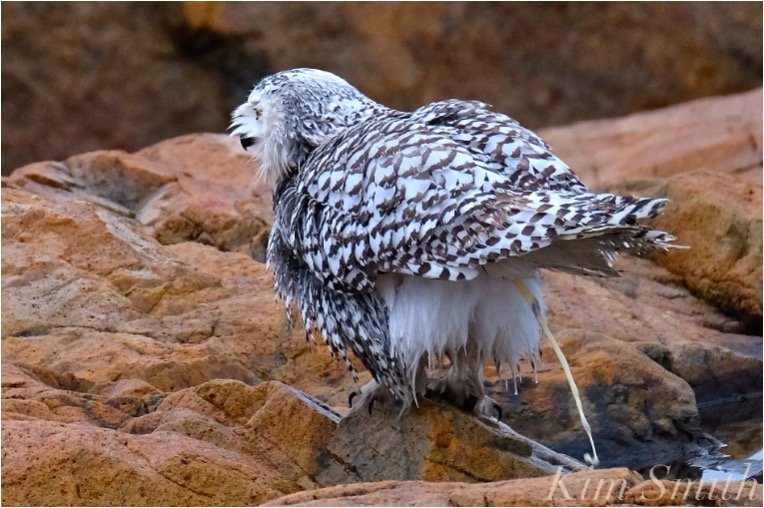
Are Owl Pellets and Poops Same?
No, owl pellets and owl poop are not the same thing. Owl pellets are a mass of indigestible parts of prey regurgitated by an owl after partially digesting it in its stomach. The non-digestible parts of the prey, such as bones, fur, feathers, and insect exoskeletons, are compacted into a pellet and expelled from the owl’s mouth.
Owl poop, also known as owl droppings, is waste material excreted from the owl’s digestive system. It is composed of the undigested food material, as well as the waste products of metabolism.
Owl droppings are typically a whitish or grayish color, and due to their high moisture content, they can be quite messy. While owl pellets and owl droppings may look similar at first glance, they are two distinct forms of waste produced by the owl’s digestive system.
Owl Pellets vs Owl Poops
| Owl Pellets | Owl Poops |
| A mass of indigestible parts of prey that an owl regurgitates after partially digesting it in its stomach. | The waste material that is excreted from the owl’s digestive system. |
| Composed of bones, fur, feathers, and insect exoskeletons. | Composed of undigested food material and waste products of metabolism. |
| Typically a compact mass that is expelled from the owl’s mouth. | Usually a more liquid or semi-solid consistency that is excreted from the owl’s cloaca. |
| Used by scientists and researchers to study the feeding habits and ecology of owls. | Used more for general studies of the bird’s physiology and behavior. |
| Can be dissected to identify the species of prey that the owl has consumed. | Not typically used for identification purposes. |
| Often dry and odorless. | Can be messy and have a strong odor. |
Does Owl Pellets Comes from Mouth?
Yes, owl pellets do come from the owl’s mouth. Owl pellets are formed from the indigestible parts of the prey that the owl has consumed. The owl regurgitates the pellet from its mouth when it is ready to be expelled.
The owl’s mouth and esophagus are specially adapted for this process, and the pellet is expelled without being contaminated by digestive juices or feces.
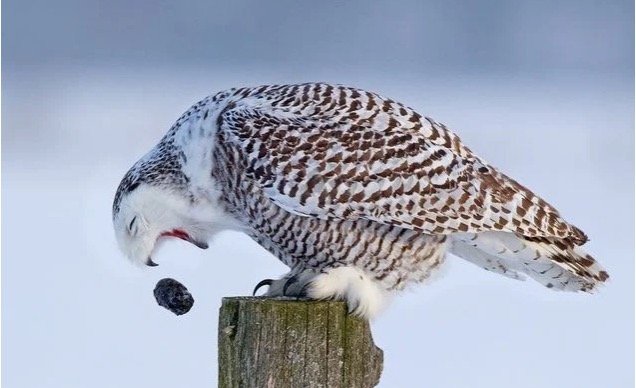
Does Owl Pellets Comes from Cloaca?
No, owl pellets are not produced by the cloaca. Owl pellets develop in the owl’s stomach and are regurgitated through the mouth.
The cloaca is a shared opening in owls for the digestive, reproductive, and urinary tracts, but it is not involved in the formation or elimination of owl pellets.
What are Owl Pellets Used For?
Owl pellets are used in a number of educational and scientific applications. Here are some of the applications for owl pellets:
1. Studying owl diets: Owl pellets contain a wealth of information about owl diets and feeding habits. Scientists and researchers can identify the types of prey that the owl has consumed as well as the relative abundance of different prey species in the owl’s diet by dissecting and analyzing owl pellets.
2. Ecology teaching and learning: Owl pellets are frequently used in educational settings to teach students about ecology and food webs. Students can learn about the relationships between predators and prey in an ecosystem by dissecting owl pellets and identifying the prey species.
3. Environmental health monitoring: Because owls are apex predators, their diets can provide information about the health of the ecosystems in which they live. Researchers can track changes in the abundance and diversity of prey species and assess the health of the ecosystem by studying changes in the composition of owl pellets over time.
4. Art and crafts: Some people use owl pellets for art and crafts, such as making jewelry or sculptures.
Why are Owl Pellets Important?
Owl pellets are significant for a number of reasons:
1. Understanding owl behavior and diet: Owl pellets contain important information about owl feeding habits and behavior. Researchers can determine what types of prey the owl eats, how frequently it eats, and where it hunts by analyzing the contents of owl pellets.
2. Monitoring ecosystem health: Owls are important indicators of ecosystem health because they are apex predators. Changes in the composition of owl pellets over time can indicate changes in the abundance and diversity of prey species, as well as provide insights into the ecosystem’s overall health.
3. Educating students: Students are frequently taught about ecology, food webs, and predator-prey relationships using owl pellets in educational settings. Owl pellet dissection can be a fun and engaging way to learn about the natural world and develop critical thinking skills.
4. Conservation efforts: Habitat loss, climate change, and other factors frequently endanger owls. Researchers can identify the types of prey on which owls rely by studying owl pellets and develop conservation strategies to protect these species.
